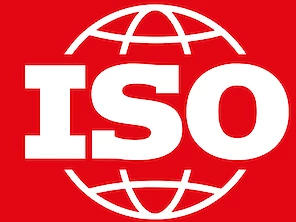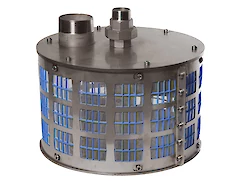What does an Underwater Oxidant Meter do?
The Underwater Oxidant Meter is an advanced measuring instrument that detects oxidants in salt and brackish water without the need for reagents. Thanks to potential pulse voltammetry with three electrodes, this meter provides fast and accurate measurements and remains reliable due to an innovative self-cleaning system.
An underwater Oxidant meter must not be confused with an ORP / Redox meter. See the technology overview:
| Technology overview | Underwater Oxidant Meter | ORP / Redox Meter |
| Measurement Principle | Potential Pulse Voltammetry (PPV) with three electrodes | Electrochemical potential difference between two electrodes |
| Target | Direct measurement of oxidants (e.g., chlorine, ozone, H₂O₂) | General oxidation-reduction potential (a combined effect of all redox species) |
| Reagents Needed | ❌ No reagents required | ❌ No reagents, but indirect reading |
| Calibration | Typically less frequent due to stable design | Needs regular calibration for accuracy |
| Designed for Salt / Brackish Water | ✅ Yes, optimized for marine environments | ⚠️ Can be affected by high ionic strength and biofouling |
| Fouling Resistance | ✅ Self-cleaning system helps avoid biofouling | ❌ Prone to fouling, requires regular maintenance |
| Depth Rating | ✅ Submersible and rugged | ⚠️ Limited submersion, not always pressure-rated |
| Response Time | ⚡ Fast, real-time detection | Moderate to slow, stabilizes over time |
| Selectivity | ✅ High — can distinguish between oxidants | ❌ Low — gives a general redox state only |
| Stability Over Time | ✅ Excellent with pulse technology | ❌ Can drift, affected by contamination or coating on the probe |
Why an Underwater Oxidant Meter?
In various industrial and environmental applications, it is essential to monitor the presence of oxidants in water. The Underwater Oxidant Meter allows you to control water quality parameters, allowing you to efficiently:
Applications of the Underwater Oxidant Meter.
The Underwater Oxidant Meter is used in various industries and applications. When you're looking for general water quality or are on a budget, consider an ORP meter. Perfect applications for the Underwater Oxidant Meter:
Specifications
| Feature | Details |
|---|---|
| Measurement Purpose | Oxidants in seawater and brackish water |
| Measurement Principle | Three-electrode potential pulse voltammetry |
| Measuring method | Microelectrode system with self-cleaning beads |
| Measuring range | 0-2.00 mg/L (Standard) - Optional: 1.00/3.00/5.00 mg/L |
| Repeatability | ±5% of full scale plus one digit |
| Response time | 1 minute (90% response) |
| Temperature compensation | Automatic compensation with a thermistor |
| Conditions | pH range: 5.8-8.6 (variation within ±0.5 pH) Conductivity: ≥10 mS/m (variation within ±10 mS/m) Water temperature: 0 - 45℃ (no freezing) Ambient temperature: -10 - 45°C Humidity: ≤90% RH (no condensation) |
| Installation | Wall mounting (Optional: Tube mounting with U-bolt kit) |
| Resolution | 0.01 mg/L |
| Signal Output | DC 4- 20mA (Isolated, maximum load 500Ω) |
| Alarm outputs | Upper and lower limit alarms (1a each) |
| Control output | Adjustable range: - ±10% of full scale - ±5% of full scale - ±2.5% of full scale |
| Power supply | AC 100-240V (±10% variation) 50/60Hz |
| Pressure resistance | 0.5 MPa |
| Optional accessories | 1. Stainless steel Tube Stand (1500 mm long) 2. Attachment kit for tube (50A) 3. Connection box (sensor cable extension). 4. Dedicated extension cable (available in 10 m lengths). |








